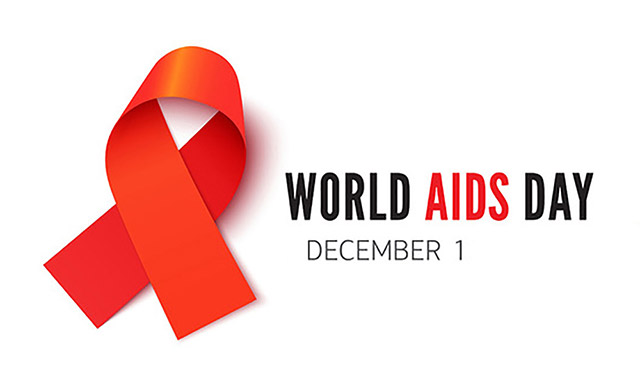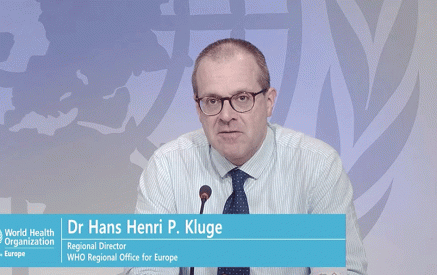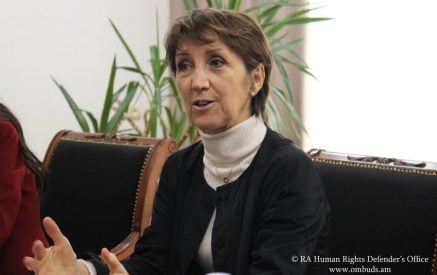A new report marking World AIDS Day, jointly published by the WHO Regional Office for Europe and the European Centre for Disease Prevention and Control (ECDC) shows a 24% drop in the rate of newly diagnosed HIV cases between 2019 and 2020. This drop is largely due to reduced HIV testing during 2020 caused by COVID-19 restrictions and disruptions in service.
This is an alarming situation, considering that over the last decade, new HIV infections have been on an increasing trend in the WHO European Region. Data from the report indicate that the number of people in the Region living with undiagnosed HIV is on the increase.
Despite the potential under-diagnosis and under-reporting in 2020, 104 765 new HIV infections were diagnosed in 46 of the 53 countries of the European Region, including 14 971 from countries of the European Union/European Economic Area (EU/EEA). This corresponds to 11.8 newly diagnosed infections per 100 000 population overall in the European Region.
“With the world’s attention focused on the COVID-19 pandemic, we cannot forget another deadly virus that has been devastating lives and communities for nearly 40 years. Since HIV was first identified in 1984, it has claimed more than 35 million lives, making it one of the most destructive pandemics in history,” said Dr Hans Henri P. Kluge, WHO Regional Director for Europe.
Read also
“In recent years, many countries of the European Region have worked to increase testing and treatment while addressing social stigma. But new data gathered since the emergence of COVID-19 paint a worrying picture, suggesting that many people living with HIV are not being diagnosed in time, which could have long-term consequences on their quality of life.
“As we continue to tackle the COVID-19 pandemic we must get back on track in our response to HIV. There is still too much stigmatization, discrimination and misinformation surrounding this virus, with huge disparities in diagnoses and treatment within the European Region. Together, we can end AIDS by 2030,” added Dr Kluge.
ECDC Director Dr Andrea Ammon said: “2020 was a key year for HIV, when we needed to be reaching the 90–90–90 testing, treatment and viral suppression targets to be on track to meet the Sustainable Development Goals by 2030. While we have seen a decline in cases in 2020, it is likely that a substantial proportion of that decline is due to fewer cases detected early, given that HIV testing services were reduced or closed during a portion of 2020 due to COVID-19 measures. In this context, I think it is fair to say that most of Europe will not be reaching the 2030 targets unless we address some major gaps along the prevention, testing and treatment continuum.
In the years ahead, we need to monitor the trends closely to ensure that the setbacks due to COVID-19 have not made the situation of late HIV diagnosis worse. Also, we need to scale up primary prevention across the region, including pre-exposure prophylaxis, scale up testing, and make HIV treatments available immediately after diagnosis to as many people as possible.
Lastly, there is an additional aspect which I think has been overlooked and needs addressing: we really need to improve our understanding of HIV stigma.”
Multiple HIV services impacted by COVID-19
Preliminary data from ECDC show that multiple types of HIV services across the continuum of HIV care are being impacted by COVID-19, from prevention outreach and the provision of pre-exposure prophylaxis (PrEP) to in-clinic and community-based HIV testing, treatment and care programmes.
Countries must concentrate on reaching key populations
Our findings clearly show the HIV pandemic is not over, and while progress has been made, global targets for 2020 were not met and there is a real danger that the 2030 goal will not be met either.
The mode of transmission varies across the European Region, with sexual transmission between men as the most common mode in the EU/EEA. Heterosexual transmission and injecting drug use were the main reported transmission modes in the eastern part of the Region.
Some important groups and populations, including children and men, are not being sufficiently reached by HIV testing, prevention and care services. These inequalities have been further compounded by complications caused by the COVID-19 pandemic.
Countries need to focus on user-friendly prevention and testing services, with a focus on reaching key populations. These could be assisted partner notification, PrEP, HIV testing performed by trained lay providers and self-testing in line with ECDC guidance and WHO recommendations.
On World AIDS Day 2021, WHO is calling on global leaders and citizens to rally to confront inequalities and reach people left behind to overcome the growing disparities in access to essential HIV services.





























































